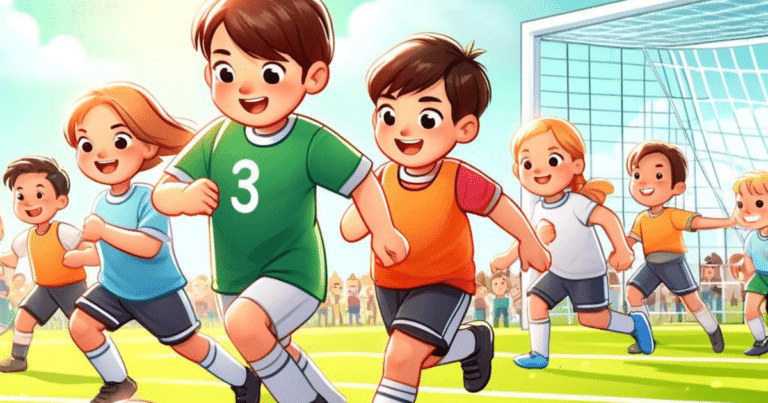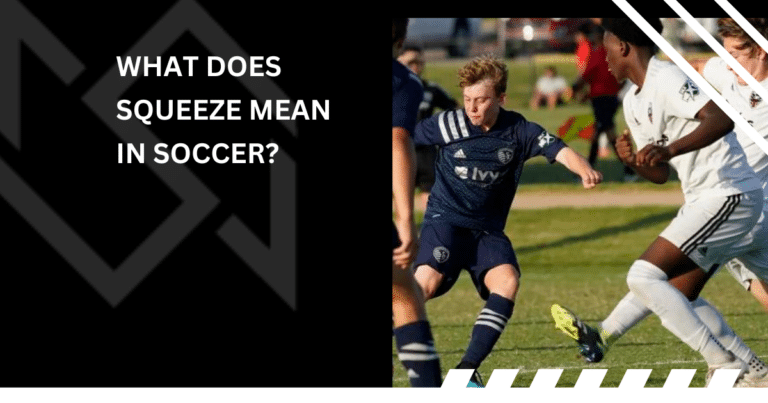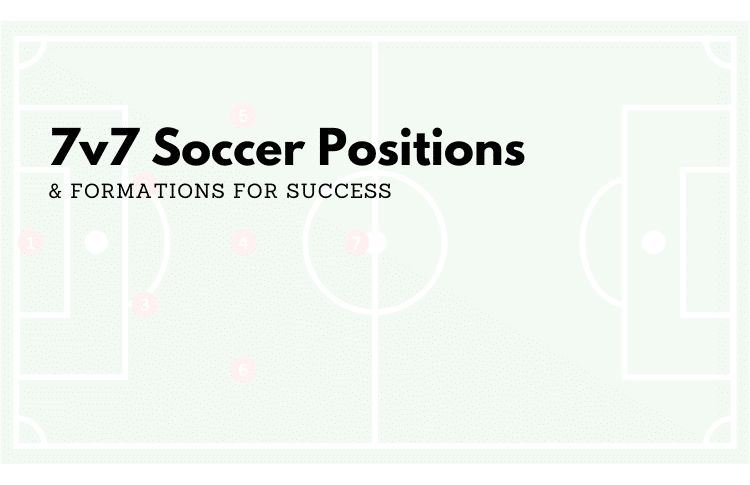4-4-2 Formation: How to Play it Effectively
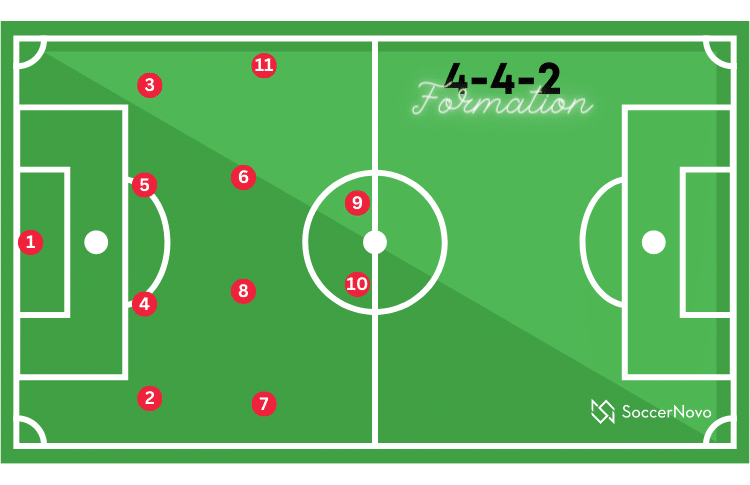
The 4-4-2 soccer formation has been a popular tactic for many years. It is a formation that is often used by teams that want to balance their defensive and offensive strategies.
In this formation, there are (4) defenders, (4) midfielders, and (2) forwards.
In any formation, you start the count at the back and exclude the goalie. For example, a 3-4-3 formation is (3) defenders, (4) midfielders, and (3) forwards. Each formation should add up to 10 plus a goalkeeper makes it eleven players on the field.
The 4-4-2 formation is known for its versatility and adaptability. It can be used in a variety of situations, depending on the strengths and weaknesses of the team.
The formation allows for a strong defensive presence while still providing opportunities for attacking play. It is a formation that requires a high level of teamwork and communication between players in order to be effective.
Overall, the 4-4-2 soccer formation is a classic tactic that has stood the test of time. In this article, we’ll explain everything you need to know about the 4-4-2 formation.
Overview of the 4-4-2 Formation
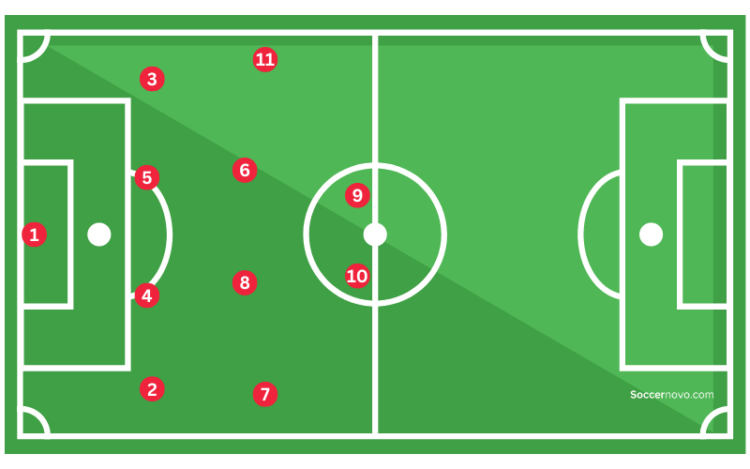
In the 4-4-2, the defenders are split into two center-backs and two full-backs.
The center-backs are responsible for marking the opposing team’s forwards and preventing them from scoring.
The full-backs are responsible for providing support to the midfielders and helping to create attacking opportunities.
The midfielders are split into two central midfielders and two wide midfielders.
The central midfielders are responsible for controlling the midfield and distributing the ball to the forwards.
The wide midfielders are responsible for providing support to the full-backs and helping to create attacking opportunities.
The two forwards are responsible for scoring goals. They work together to create scoring opportunities and put pressure on the opposing team’s defense.
4-4-2 Soccer Responsibilities
Defensive Roles
In the 4-4-2 soccer formation, the two central defenders (CD) are responsible for protecting the goal and preventing the opposition from scoring. They must stay compact and work in tandem to prevent any gaps from appearing in the defense.
The fullbacks (FB) must provide cover and support to the CD’s while also pushing forward to assist the midfield. They also need to be able to read the game and anticipate the opposition’s movements.
Midfield Roles
The central midfielders (CM) are responsible for controlling the tempo of the game. They must be able to distribute the ball effectively and maintain possession.
The left midfielder (LM) and right midfielder (RM) have a similar role, but they also need to provide width to the team and stretch the opposition’s defense.
Attacking Roles
The two strikers (ST) are responsible for scoring goals and creating chances for their teammates. They must be able to hold up the ball and bring other players into the play. They also need to be able to make intelligent runs and finish their chances when they arise.
Strengths and Weaknesses of a 4-4-2
Strengths
The 4-4-2 soccer formation has been one of the most popular formations used in soccer for many years. Many youth and professional coaches like the balance it provides without compromising goal scoring opportunities. This formation has several strengths that make it an effective choice for many teams.
- Solid Defense: The 4-4-2 formation provides a solid defensive structure with four defenders and two holding midfielders in front of them. This makes it difficult for the opposition to break through the defensive line and create scoring opportunities.
- Wide Play: The wingers in the 4-4-2 formation provide width to the team’s play, which can create more space for attacking players to exploit. This can also help in stretching the opposition’s defense and creating gaps for attacking players to move into.
- Counter-Attacking: The 4-4-2 formation is well-suited to counter-attacking play. With two strikers up front, the team can quickly transition from defense to attack and catch the opposition off-guard.
Weaknesses
While the 4-4-2 formation has several strengths, it also has some weaknesses that teams need to be aware of.
- Lack of Midfield Creativity: The 4-4-2 formation can sometimes lack creativity in midfield. With only two central midfielders, the team may struggle to control possession and create scoring opportunities.
- Vulnerable to Overlapping Full-Backs: The 4-4-2 formation can be vulnerable to overlapping full-backs. With only two central midfielders, the team may struggle to cover the space left by the full-backs when they move forward.
- Limited Striker Support: With two strikers up front, the team may struggle to create scoring opportunities if they are not getting the necessary support from the midfielders. This can also make it difficult for the team to hold onto possession and build attacks from the front.
Final Thoughts on a 4-4-2
Whether you are a U14 team or a professional team, the 4-4-2 soccer formation has historically proven to be a versatile and effective strategy on the field.
With a solid defense, a strong midfield, and two forwards who work well together, this formation can provide a balanced approach to both offense and defense.
However, it is important to note that the success of any formation ultimately depends on the skill and teamwork of the players executing it.
Coaches and players should carefully consider their team’s strengths and weaknesses before deciding on any formation, and be willing to make adjustments as needed throughout the game.
Overall, the 4-4-2 remains a popular and reliable strategy for many soccer teams!

Written By: SoccerNovo
SoccerNovo is an independent youth soccer media brand built to help parents, players, and coaches better understand the game and the pathways available in U.S. soccer. Our mission is to make youth soccer simpler, clearer, and more accessible for everyone involved in it.
Let’s connect


